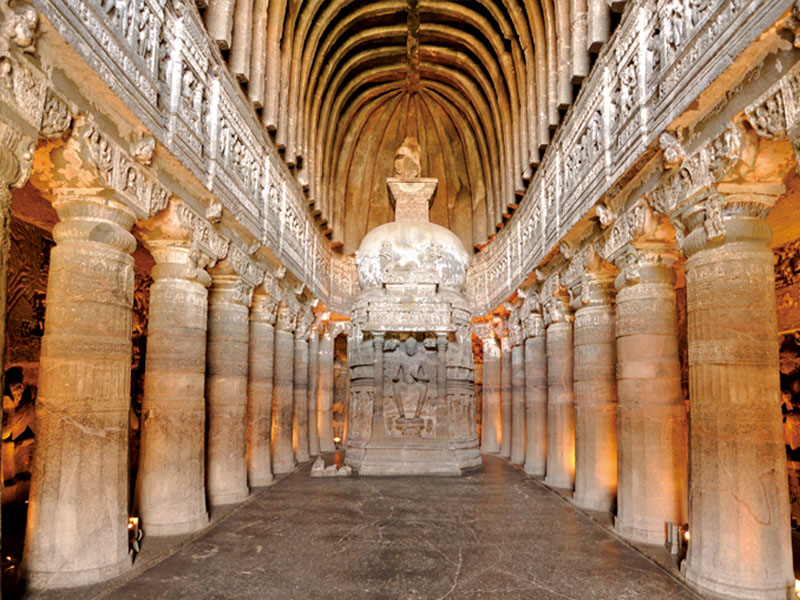
==========================
The Ajanta Caves are approximately 30 rock-cut Buddhist cave monuments which date from the 2nd century BCE to about 480 CE in Aurangabad district of Maharashtra state of India. The caves include paintings and rock-cut sculptures described as among the finest surviving examples of ancient Indian art, particularly expressive paintings that present emotions through gesture, According to UNESCO, these are masterpieces of Buddhist religious art that influenced the Indian art that followed.
They were covered by jungle until accidentally “discovered” and brought to Western attention in 1819 by a colonial British officer Captain John Smith on a tiger-hunting party.
Ajanta is one of the major tourist attractions of Maharashtra. It is about 6 kilometres (3.7 miles) from Fardapur, 59 kilometres (37 miles) from the city of Jalgaon, Maharashtra, India, 104 kilometres (65 miles) from the city of Aurangabad.
The Ajanta style is also found in the Ellora Caves and other sites such as the Elephanta Caves, Aurangabad Caves, Shivleni Caves and the cave temples of Karnataka.
VEDIK GYAN:
Southern Indians wear Tilak
(Vibhuti- Horizontal) or Naama (Vertical) based on whether they are Shaivites or Vaishnavites respectively.
Saivites wear vibhooti or sacred ash horizontally (also tilak). They follow Lord Shiva. *Iyers* in Tamil Nadu follow the tradition
The three lines of Vibhuti Tikak signify three barriers to truth – *anava* [ego], *karma* [deeds] and *maya* [illusion].
Vaishnavites wear it vertically. They follow Shri Vishnu. *Iyengars* in Tamil Nadu follow the tradition
The two outer lines are the Lord’s feet [imagine someone standing with their feet in V-shape position] and the inner line is that of Mahalakshmi feet.
LEARN Sanskrit
*विराज* : बसना, रहना Dwells
 |
Ch Narmada Naveen Kumar |



